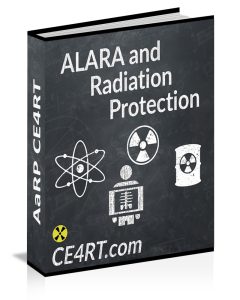Stepping Lightly – Best Practices for Interventional Radiography
The step lightly campaign is an offshoot of the image gently campaign. Where image gently focused primarily on radiation protection for pediatric CT and later general pediatric radiography, step lightly focuses on pediatric interventional radiology. However the same principles apply for adult procedures. The American Association of Physicists in Medicine (AAPM) has published a checklist of best practices for practitioners to follow during interventional procedures.
Step Lightly Checklist
Review steps below before starting the procedure.
- Safety is a team effort: don’t be afraid to ask the necessary questions to ensure you are working as a team to keep radiation dose to patients and staff as low as possible
- Reducing radiation dose must be balanced with safe, accurate and effective completion of the procedure. Not all the steps below may be possible in each case, depending on patient size, technical challenge and critical nature of the procedure. Overall patient safety is most important. The goal is to minimize the dose to the patient while providing important and necessary medical care.
- Ask patient or family about previous radiation (record card downloadable at this link). Answer questions about radiation safety (parent/patient brochure downloadable here)
- Use ultrasound when possible
- Position hanging table shields and overhead lead shields prior to procedure with reminders during the case as needed
- Operators and personnel wear well fitted lead aprons, thyroid shield and leaded eyewear
- Use pulse rather than continuous fluoroscopy when possible, and with as low a pulse as possible
- Position and collimate with fluoroscopy off, tapping on the pedal to check position
- Collimate tightly. Exclude or shield eyes, thyroid, breast, gonads when possible
- Operator and personnel hands out of beam
- Step lightly: tap on pedal and review anatomy on last image hold rather than with live fluoroscopy when possible; minimize live fluoroscopy time
- Minimize use of electronic magnification; use digital zoom whenever possible
- Acknowledge fluoroscopy timing alerts during procedure
- Use last image hold whenever possible instead of exposures
- Adjust acquisition parameters to achieve lowest dose necessary to accomplish procedure: use lowest dose protocol possible for patient size, lower frame rate, minimize magnification, reduce length of run
- Plan and communicate number and timing of acquisitions, contrast parameters, patient positioning and suspension of respiration with radiology and sedation team in advance to minimize improper or unneeded runs
- Move table away from X-ray tube in both planes. Move patient as close to detector in both planes
- Use power injector or extension tubing if hand injecting
- Move personnel away from table or behind protective shields during acquisitions
- Minimize overlap of fields on subsequent acquisitions
- After procedure: record and review dose
Here is more information about radiologic technologist ce credits.
